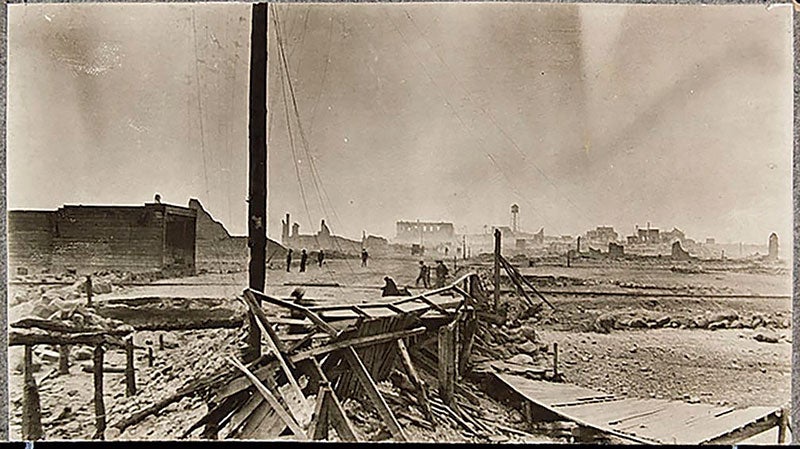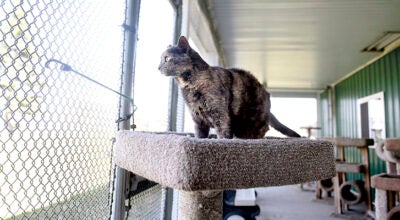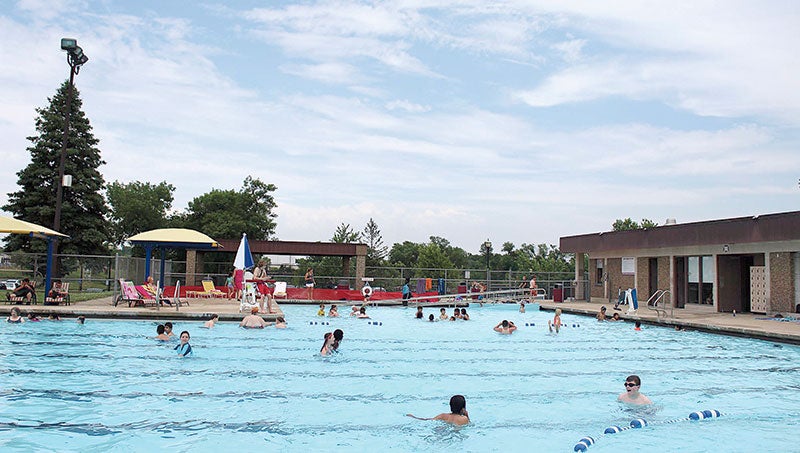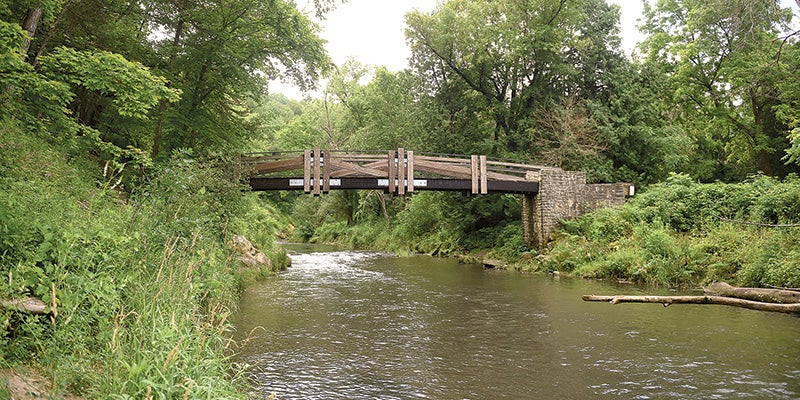125 years ago, the Great Hinckley Fire became one of Minnesota’s worst natural disasters
Published 7:32 am Tuesday, September 3, 2019

- A view of the main street in Hinckley, Minnesota, on Sept. 2, 1894 — the morning after a wildfire destroyed the town. Photo courtesy Minnesota Historical Society
By Andrew Krueger
MPR News/90.1 FM
As traffic zips by day and night, a tall granite obelisk stands sentinel on the east side of Hinckley, Minnesota.
It’s a silent reminder of one of Minnesota’s worst natural disasters — a wildfire that devastated Hinckley and several nearby communities 125 years ago, on Sept. 1, 1894.
The official death toll of the Great Hinckley Fire stands at 418, with many of those victims buried in mass graves beneath the obelisk. It’s a number that trails only the 1918 Cloquet-Moose Lake fire (453 deaths) among the deadliest Minnesota natural disasters on record.
The summer of 1894 was dry, dusty and smoky across east-central Minnesota. There were large slash piles, stumps and sawdust left behind by massive logging operations. Small wildfires were commonplace — almost like Mother Nature “crying wolf,” one survivor later recalled.
That may have left residents complacent when two more fires started on Sept. 1.
On that day “Hinckley experienced a temperature inversion, as a blanket of cooler air trapped the warmer air beneath,” MPR News reporter Euan Kerr recounted in a 1994 story on the centennial of the fire; listen to the full story at the audio player above. “A trash fire got out of control, but its heat and smoke were trapped under the inversion. A brush fire also flared, fanned by a rising wind. Ultimately the fires merged, and the resulting blaze was fierce enough to punch a hole through the blanket of cooler air. As the hot air blasted upward, cooler air rushed in to take its place, fanning the flames and intensifying the blaze. Suddenly the people of Hinckley were not facing a fire. They were facing a firestorm.”
Residents of Hinckley and nearby towns had little time to escape, but there were tales of heroism. The crews of two trains braved the firestorm and managed to carry hundreds of people to safety. Others found shelter in nearby lakes, rivers and swamps.
But for many people, there was no way to outrun or escape the towering flames. Within hours, the fire burned hundreds of square miles.
After the fire had passed, relief supplies poured in from surrounding communities and Hinckley was quickly rebuilt. According to the 1994 MPR story, the burned-over land — cleared of stumps and logging debris — was put into use for farming.
All survivors of the Hinckley fire are now long deceased, but their stories live on at the Hinckley Fire Museum, housed in the city’s train depot that was rebuilt after the fire.
And traces of the fire still linger in the area, just beneath the surface.
“Even today when you dig into the earth around Hinckley, it’s interesting to see where the fire line (of ash) actually was,” Jeanne Coffey from the Hinckley Fire Museum told MPR News in a 1994 interview. “It’s about a foot underground, but it’s still there.”




